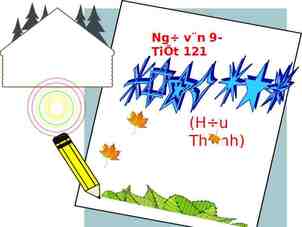Public Health Incident Leadership M OD U L E 1 : L EA D ER S H I
28 Slides175.24 KB

Public Health Incident Leadership M OD U L E 1 : L EA D ER S H I P August 2015

Objectives Describe the attributes of a successful Public Health Incident Commander Understand the difference between everyday leadership versus leadership during a public health emergency response Apply various leadership concepts to the context of a public health emergency response

Public Health and the Incident Command System Incident Command System Public Health Command and Control Coordination Hierarchical Collaborative Militarized Terminology Public Health Terminology Expedited Decision-making Consensus Decision-making

Are there certain characteristics, traits, or attributes that increase the likelihood of being an effective Public Health Incident Commander?

Small Group Discussion I want you to think of someone who has successfully modeled the role of Incident Commander to you during an emergency response event. What made them an ideal Incident Commander? In your opinion, what key criteria should be considered when selecting someone who can function as an Incident Commander for an emergency response?

Public Health and the Incident Command System Big picture perspective Good communication Calm Familiar with ICS framework, system, and roles Confidence Flexible Approachable Delegates Deliberate Forward thinking Trusting of team Emergency preparedness experience Core competencies in leadership Likes working in teams Willing to take charge Comfort with changing and uncertain environment of a disaster Mentoring demeanor

“Many attributes of leaders that would facilitate their effectiveness in general would also be useful in getting others through a crisis ” (DuBrin 2013)

Public Health and the Incident Command System Filling the role of Incident Commander does feel different: Tensions are high Structure differs from everyday work Intense pace Ambiguity Not subject matter expert Leading unfamiliar people Partnering with various organizations Competing demands

Crisis Leadership vs. Everyday Leadership

Crisis Leadership Characteristics of a crisis: 1. 2. 3. Threat of viability Ambiguity Urgency (DuBrin 2013)

Crisis Leadership What is crisis leadership? “The process of leading group members through a sudden and largely unanticipated, intensely negative, and emotionally draining circumstance.” (DuBrin 2013)

Crisis Leadership Attributes of Effective Disaster Responders ICS Training General Training and Experience Teamwork and Interpersonal skills Communication Cognition Problem-solving/Decision-making Adaptable/Flexible Calm/Cool Character Performs Role

Preparing for Surprise Comfort with Take initiative ambiguity Transparency Learn fast and adjust Knowledge Effective communication Delegation Public health science NIMS/ICS Public health law Understanding people and complex systems

Crisis Leadership in Public Health Competence in Public Health Science Decisiveness Situational Awareness Coordination Communication Inspires Trust

Everyday Leadership Transformational Leadership Meta-Leadership Adaptive Leadership

Transformational Leadership Model the Way Clarify shared values Set an example Inspire a Shared Vision Find a common purpose Enlist others Challenge the Process Seize initiative Forward-thinking Learn from the past Enable Others to Act Foster collaboration Create climate of trust Develop competence and confidence Encourage the Heart Recognize contributions Create spirit of community

Transformational Leadership Have you ever worked with a leader who embodies the transformational leadership qualities we just discussed? How can these transformational leadership traits be applied to the role of Incident Commander during an emergency response?

Transformational Leadership Applying transformational leadership to emergency response: Fosters collaborative work towards a shared goal Develops confidence and trust Encourages flexibility and adaptability Creates “psychological hardiness”

Everyday Leadership Transformational Leadership Meta-Leadership Adaptive Leadership

Meta-Leadership Overarching leadership across organizational lines Unites people and agencies under a common purpose and “shared course of action” “Imaginative multidimensional problem solving” (Marcus, Dorn, and Henderson 2006)

Meta-Leadership Can you see overlap between the principles of Meta-leadership and the skills needed to perform the role of Incident Commander during a public health response? Are there any situations you have been in where the practices of Meta-leadership would have been helpful?

Meta-Leadership Applying Meta-leadership to emergency response: Cross-organizational partnerships with other departments Cross-organizational partnerships with other response entities BIG picture perspective Work outside of subject matter expertise

Everyday Leadership Transformational Leadership Meta-Leadership Adaptive Leadership

Adaptive Leadership Get on the balcony Broad level view Identify the adaptive challenge Diagnose roadblocks Regulate distress Strike a balance Maintain disciplined attention “Focus on tough questions” Give the work back to the people Build self-confidence Protect voices of leadership from below Give others a voice

Adaptive Leadership What would it look like if adaptive leadership was applied to leadership within an emergency response?

Adaptive Leadership Applying Adaptive Leadership to emergency response: Get on the balcony to achieve situational awareness Regulate distress through monitoring of workloads, staff, and resources Keep team members focused on the responsibilities associated with their role Delegate, direct, and oversee

Framework for Public Health Incident Leadership Skills Behaviors “Do” Performance Skills Leaders hip Knowledge Cognitions “Think” Situation Monitoring Communicati on Attitudes Affect “Feel” Mutual Support Knowledge Attitudes

References Begun, J., & Malcolm, J. (2014). Leading public health: A competency framework. New York, NY: Springer Publishing Company, LLC. Deitchman, S. (2013). Enhancing crisis leadership in public health emergencies. Disaster Medicine and Public Health Preparedness, 7(5), 534-540. DuBrin, A. J. (Ed.). (2013). Handbook of research on crisis leadership in organizations. Cheltenham, UK ; Northampton, Mass: Edward Elgar Publishing. Heifetz, R., & Laurie, D. (1997). The Work of Leadership. Harvard Business Review, January-February, 124-134. Kouzes, J., & Posner, B. (2007). The Leadership Challenge. San Francisco, CA: Jossey- Bass. Marcus, L., Dorn, B., & Henderson, J. (2006). Meta-leadership and national preparedness: a model to build government connectivity. Biosecurity and Bioterrorism: Biodefense Strategy, Practice, and Science. 4(2), 128-134.






